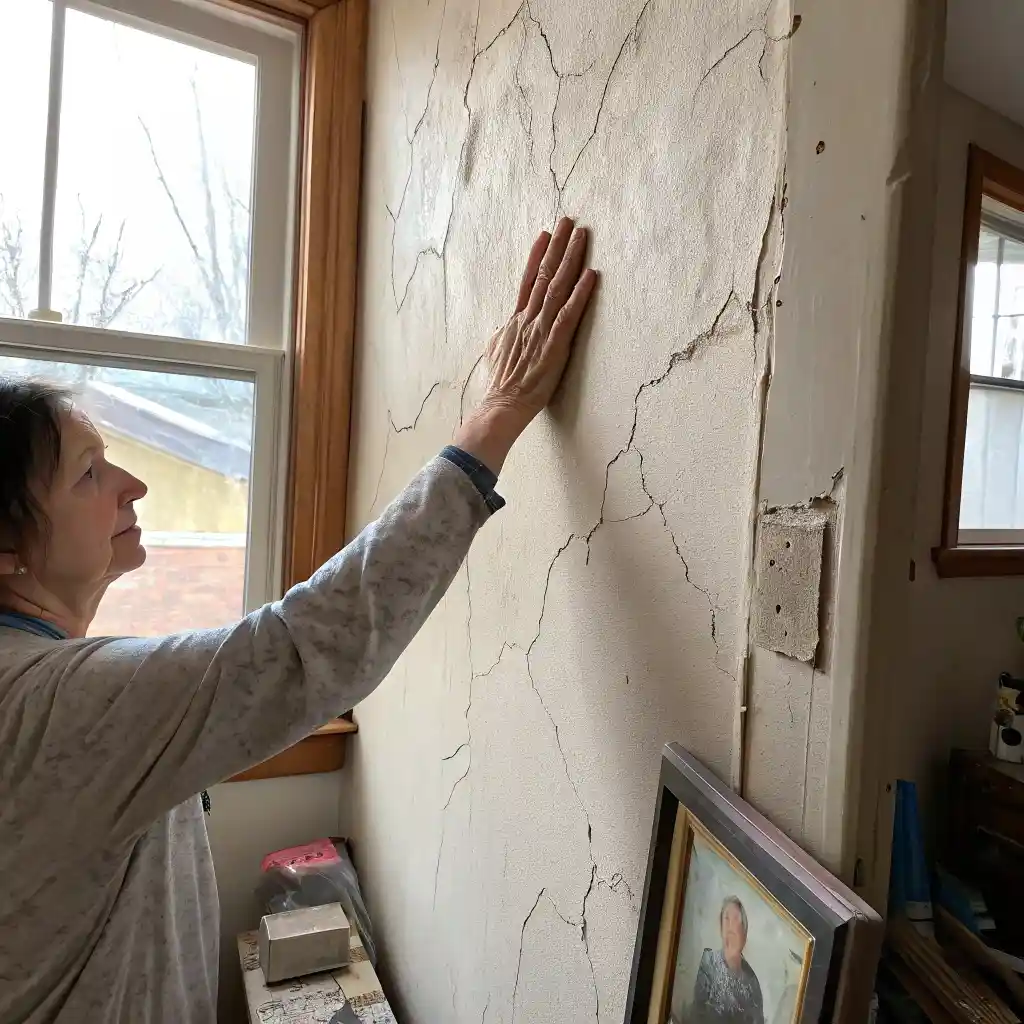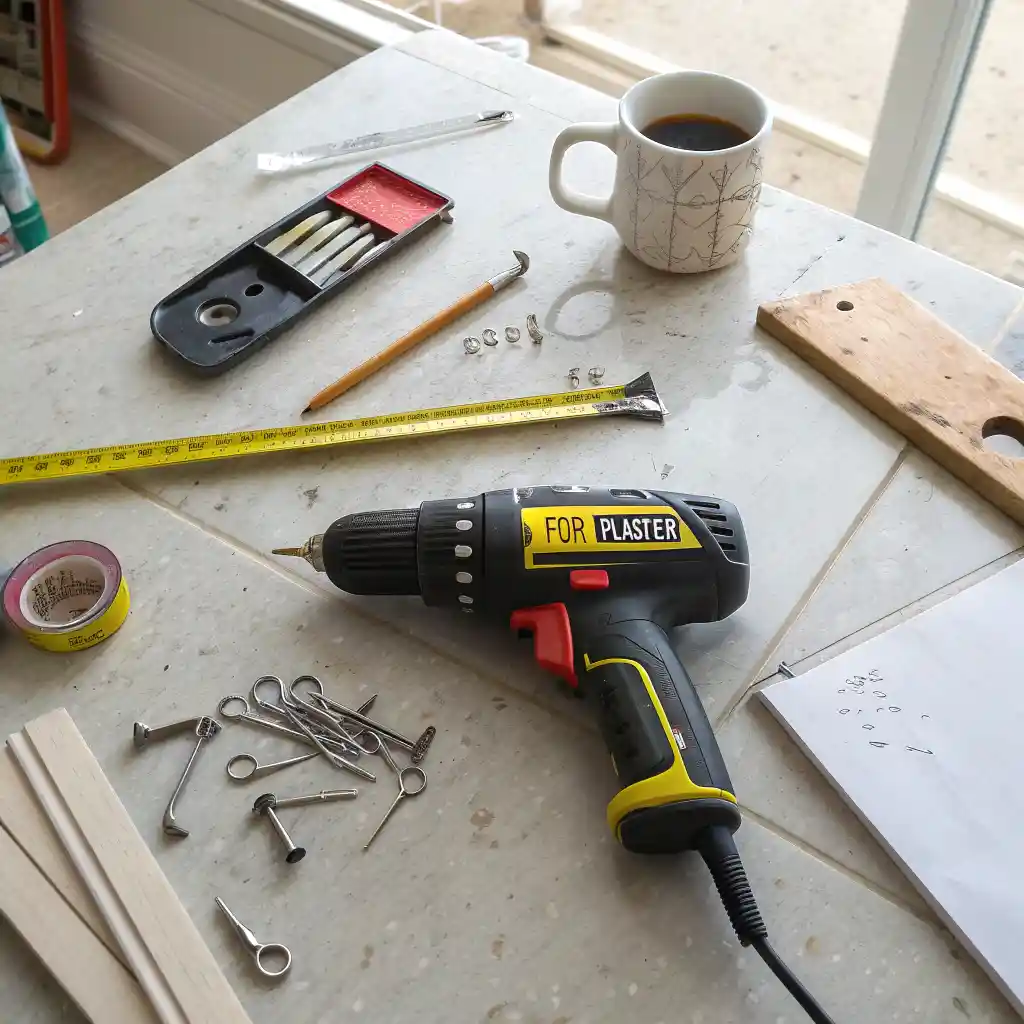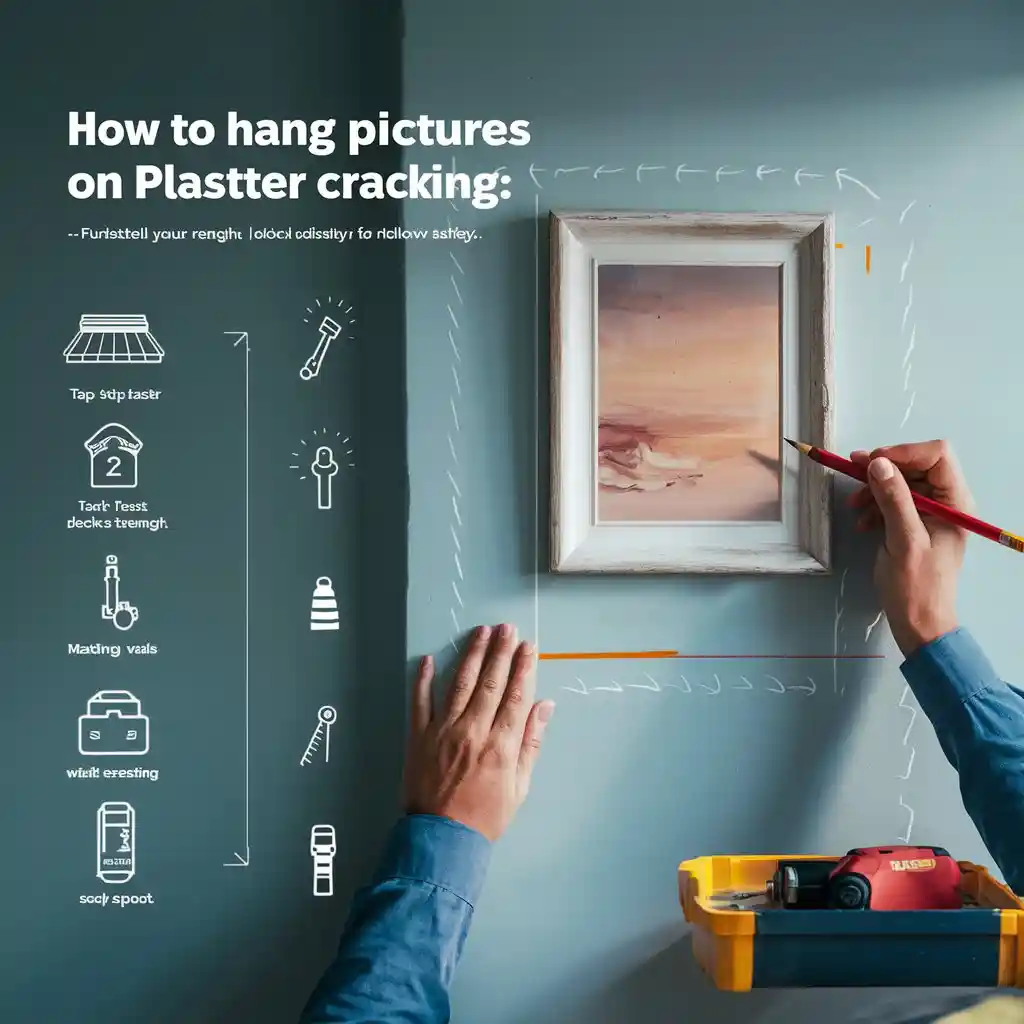How to Hang Pictures on Plaster Walls Without Cracking or Damage
If you’ve ever tried hanging pictures on plaster walls, you know it’s not always as simple as with drywall. Plaster can be tricky — it’s older, often more delicate, and can crack or crumble if you’re not careful. But here’s the good news: with the right techniques and a bit of patience, you can safely hang your favorite art, photos, or mirrors without turning your walls into a patchwork project.
In this guide, we’ll walk through everything you need to know about hanging pictures on plaster walls — from understanding what makes plaster different, to picking the right tools, and avoiding the most common mistakes that cause damage. You’ll also discover alternative hanging methods if you want to skip the drill, plus quick fixes if things don’t go perfectly the first time (hey, it happens to the best of us).
So if you’re ready to get your walls looking like a gallery — minus the stress or fear — you’re in the right place. Let’s dive in and make your plaster walls picture-perfect, the right way.
Table of Contents
Understanding Your Plaster Walls

Plaster walls aren’t just “old drywall.” They’re a whole different beast, and knowing what you’re dealing with can save you a lot of headaches down the line. Typically found in homes built before the 1950s, plaster walls are made of multiple layers — usually a base of wooden lath covered with wet plaster that hardens into a solid surface. This layered structure means plaster can be thicker and more brittle than drywall, making it prone to cracking or crumbling if handled roughly.
Not all plaster walls are the same, though. Some have a hard, smooth finish, while others might have a rough texture or even layers of paint or wallpaper on top. Sometimes, the plaster can even start separating from the lath underneath, which weakens the wall’s integrity and makes hanging anything tricky.
How to Identify Your Plaster Wall Type
- Tap test: Knock lightly on the wall. A hollow sound might mean loose plaster or gaps beneath, which means extra caution. A solid, firm sound usually means the plaster is intact and can hold some weight.
- Look for cracks or bumps: Hairline cracks are common, but large cracks or crumbling edges indicate fragility.
- Check the thickness: Plaster is usually thicker than drywall—often around ¾ inch or more.
Understanding these characteristics helps you choose the right fastener and hanging method, reducing the risk of damage and giving you confidence to tackle your wall.
Why Does This Matter?
If you try hammering a nail into brittle plaster, it’s almost like poking a fragile eggshell — there’s a good chance it will crack or chip away. But knowing if your plaster is healthy or fragile helps you decide if you need anchors, special screws, or maybe even non-invasive hooks. This little bit of prep can make a huge difference in how your project turns out.
FAQ: How can I tell if my plaster wall is too fragile to hang pictures on?
If you notice large cracks, plaster flaking, or hear a hollow sound when tapping, your wall might be fragile. In that case, opt for adhesive hooks or consult a professional before drilling. Better safe than sorry!
Tools and Materials You’ll Need for Hanging Pictures on Plaster Walls

Before you start making holes (or sticking hooks), it’s smart to gather the right tools and materials. Using the correct hardware not only protects your plaster walls from damage but also ensures your pictures stay put—no unexpected crashes or nail holes later on.
Essential Tools
- Drill with masonry bit: A lightweight drill fitted with a masonry bit helps create clean holes without cracking plaster. Avoid heavy-duty hammer drills unless necessary.
- Stud finder designed for plaster: Traditional stud finders can struggle with plaster walls, so look for ones that specifically mention plaster or lath detection.
- Tape measure and pencil: For precise placement and marking.
- Level: To make sure your pictures hang straight (because crooked art is frustrating).
- Hammer and nails: For lighter frames and when using picture hooks, but be cautious — hammering nails directly into plaster can cause cracks.
- Wall anchors and screws: These are a must for heavier pieces. Plastic or metal anchors spread the load and keep your frame secure.
Types of Fasteners: Which One to Choose?
- Picture hooks: Simple and less invasive, ideal for lightweight frames. Use hooks rated for your frame’s weight.
- Plastic anchors: Good for medium-weight frames, they expand inside the drilled hole, offering more grip.
- Metal anchors (molly bolts or toggle bolts): Stronger and better for heavy frames or mirrors, these fasteners spread the load behind the plaster.
Safety Gear
- Safety goggles: Protect your eyes from plaster dust.
- Dust mask: Plaster dust can irritate lungs—wear a mask when drilling.
- Gloves: Optional, but can help with handling tools or sharp fasteners.
Why These Matter
Using the wrong fasteners is like trying to hang a heavy picture with just tape—it won’t hold and could damage your wall. Investing a little time in picking the right hardware saves you from headaches, keeps your walls intact, and your art secure.
FAQ: Can I use regular drywall anchors on plaster walls?
Regular drywall anchors often don’t work well on plaster because plaster is harder and more brittle. It’s better to use anchors specifically designed for plaster or masonry to avoid cracking or loose fittings.
Step-by-Step Guide to Hanging Pictures on Plaster Walls

Hanging pictures on plaster walls might feel intimidating, but breaking it down into manageable steps makes it easier — and helps avoid the dreaded cracks or holes you’ll regret. Follow this guide, and you’ll be on your way to displaying your favorite pieces with confidence.
1. Prepare Your Wall
Start by cleaning the area where you want to hang your picture. Dust and dirt can interfere with adhesives or cause marks. Next, use your stud finder to locate any studs behind the plaster. Hanging on a stud gives your frame extra support but isn’t always necessary if you use the right anchors.
2. Measure and Mark
Use a tape measure and pencil to mark the exact spot where you want the picture hook or screw to go. It’s better to double-check measurements before drilling or hammering. Level your marks if you’re hanging multiple pictures to keep everything straight.
3. Choose the Right Fastener
Based on your picture’s weight and wall type, pick the appropriate fastener:
- For light frames (under 5 pounds), picture hooks or small nails might work.
- Medium frames (5-20 pounds) benefit from plastic anchors and screws.
- Heavy frames (over 20 pounds) require metal anchors like toggle bolts or molly bolts.
4. Drill or Hammer Carefully
If drilling, use a drill bit slightly smaller than your anchor to make a clean hole. Drill slowly to avoid overheating or cracking the plaster. If using nails or hooks, gently tap them in rather than hammering hard — you want to avoid causing stress cracks.
5. Insert Anchors and Hang Your Picture
Insert your chosen anchor firmly into the drilled hole, then screw in the screw or hook. For nails or hooks, ensure they’re snug but not forcing the plaster to chip. Finally, hang your picture and adjust as needed.
Tips for Success
- Avoid hanging very heavy objects without professional advice — plaster can only support so much.
- If unsure about your plaster’s strength, opt for alternative hanging methods like adhesive hooks.
- Always use a level to avoid crooked frames that can quickly annoy you.
FAQ: What if my plaster cracks when I drill?
If you notice cracks forming, stop immediately. You can patch minor cracks with plaster repair kits, but for significant damage, it’s best to consult a professional to avoid worsening the issue.
Alternative Hanging Methods for Delicate Walls

Sometimes, drilling or hammering into plaster just isn’t an option — whether your wall is too fragile, you’re renting, or you simply want to avoid the risk of damage. Luckily, there are several less invasive ways to hang pictures that can still look great without putting your plaster at risk.
Adhesive Hooks and Strips
One of the most popular options is using adhesive picture hooks or strips, like Command Strips. These products stick to the wall without nails and can hold surprisingly heavy frames if applied correctly. Just make sure to clean the surface well before sticking, and follow the weight limits specified by the manufacturer. They’re great for renters or for temporary displays.
Picture Rails and Hooks
If your home has picture rails (a horizontal molding near the ceiling), you can use picture hooks and wires to hang your art without touching the plaster at all. This classic method not only protects your walls but also lets you easily rearrange your gallery whenever inspiration strikes.
Leaning and Shelf Displays
Not all artwork has to be hung! Large framed pieces can lean on shelves, mantels, or furniture against the plaster wall. This adds a casual, stylish look without any wall damage at all.
Why Choose Alternatives?
Sometimes the safest option really is to avoid piercing the plaster. These methods reduce stress on fragile walls and offer flexibility. Plus, they’re often quicker and cleaner, making them ideal for those nervous about drilling or renting where wall damage could mean losing a deposit.
FAQ: Do adhesive hooks damage plaster walls?
If used properly, adhesive hooks usually come off cleanly without damaging plaster. However, older or crumbly plaster might peel off when removing them, so test a small area first or choose a less aggressive adhesive.
Common Mistakes and How to Avoid Them When Hanging Pictures on Plaster Walls
Hanging pictures on plaster walls comes with its own set of challenges, and it’s easy to slip up—especially if you’re new to working with this material. Avoiding these common mistakes can save you time, frustration, and costly repairs.
Mistake 1: Using the Wrong Hardware
One of the biggest errors is using regular nails or drywall anchors not meant for plaster. These can easily cause plaster to crack or crumble under pressure. Always opt for plaster-appropriate anchors or picture hooks rated for your frame’s weight.
Mistake 2: Drilling Too Fast or Deep
Plaster walls require patience. Drilling too quickly or forcing the drill too deep can create stress cracks. Use a slow, steady drill speed and stop once the anchor hole is just the right size.
Mistake 3: Ignoring Wall Condition
Ignoring cracks, flaking, or hollow sounds before hanging is a recipe for disaster. If your plaster shows signs of weakness, consider alternative hanging methods or patch the wall before proceeding.
Mistake 4: Not Finding Studs When Needed
For heavier frames, failing to find studs can result in your art falling and damaging both wall and picture. Use a stud finder designed for plaster or tap to locate studs before drilling.
Mistake 5: Skipping Safety Precautions
Plaster dust is not only messy—it can irritate your lungs and eyes. Always wear safety goggles and a dust mask when drilling to protect yourself.
How to Recover If You Make a Mistake
If you accidentally crack your plaster, don’t panic. Small cracks can be filled with plaster repair kits, sanding, and repainting. For larger damage, it’s wise to consult a professional to ensure proper restoration.
FAQ: How can I prevent my plaster from cracking when hanging pictures?
Use the right anchors, drill slowly, avoid over-tightening screws, and check the wall’s condition before starting. Patience and proper prep go a long way.
Repairing Plaster Wall Damage from Hanging Pictures

Even with the best care, plaster walls can sometimes suffer minor damage when hanging pictures. The good news? Small cracks, holes, or chips are fixable with a bit of DIY know-how—and you don’t have to be a pro plasterer to handle it.
Step 1: Assess the Damage
Start by inspecting the crack or hole. Small nail holes or tiny cracks (hairline size) are the easiest to repair. Larger cracks or chunks missing may need a bit more attention or even professional help.
Step 2: Clean the Area
Remove any loose plaster or dust around the damaged area. Use a small brush or vacuum to clear debris so the patching material adheres properly.
Step 3: Apply Plaster or Spackle
For small holes and cracks, lightweight spackle or patching plaster works well. Use a putty knife to fill the damaged area smoothly, feathering edges so it blends with the wall. For deeper holes, a plaster patch compound may be needed.
Step 4: Let It Dry and Sand
Allow the repair to dry completely, following the product instructions. Once dry, gently sand the patched area until smooth and flush with the surrounding wall.
Step 5: Paint to Match
Touch up the repair with matching paint to seamlessly blend the patch into your wall. Sometimes one coat isn’t enough, so be patient with layers.
When to Call a Professional
If the damage is extensive—think large cracks, plaster detaching from lath, or crumbling sections—it’s safer to call a plaster repair specialist. DIY fixes won’t hold up well in these cases, and you risk worsening the problem.
FAQ: Can I repair plaster cracks caused by hanging pictures myself?
For minor cracks and holes, yes! With some spackle, sanding, and paint, you can restore your wall. For bigger damage, professional repair is best to avoid long-term issues.
Weight Limits and Safety Tips for Hanging Pictures on Plaster Walls

One of the trickiest parts about hanging pictures on plaster walls is knowing how much weight your wall can actually handle. Plaster is sturdy but not invincible, and pushing its limits can lead to cracks, holes, or worse — a picture crashing down unexpectedly.
Understanding Weight Limits
As a general rule, lightweight frames under 5 pounds can usually be hung with simple picture hooks or small nails. Medium-weight frames (5-20 pounds) require plastic anchors or screws for better support. Heavy frames and mirrors over 20 pounds demand stronger metal anchors like toggle bolts or molly bolts, ideally attached to studs.
Keep in mind, plaster walls vary in thickness and condition, so what holds in one spot might fail in another. Always err on the side of caution, especially if you’re unsure about the wall’s integrity.
Safety Tips to Protect Your Walls and Art
- Distribute Weight Evenly: Use multiple hooks or anchors for large or heavy pieces to spread the load.
- Use Studs When Possible: Attaching directly into studs gives the strongest support.
- Avoid Over-Tightening Screws: Forcing screws too tight can crack plaster around the hole.
- Inspect Hanging Hardware Regularly: Over time, fasteners can loosen, so check periodically.
- Consider Alternative Methods for Very Heavy Items: For extremely heavy art or mirrors, consult a professional or use specialized hanging systems designed for plaster walls.
FAQ: How can I safely hang a heavy mirror on plaster walls?
Locate studs with a stud finder and use heavy-duty metal anchors like toggle bolts or molly bolts. Distribute the weight across multiple anchors if possible. If uncertain, it’s worth consulting a professional to avoid costly damage.
Frequently Asked Questions About Hanging Pictures on Plaster Walls
Can I use regular nails to hang pictures on plaster walls?
Regular nails can sometimes work for very lightweight frames, but they often risk cracking or chipping plaster. It’s safer to use picture hooks or anchors specifically designed for plaster walls.
How do I find studs behind plaster walls?
Standard stud finders may not work well on plaster. Look for stud finders labeled for plaster or use the tap test—knock along the wall and listen for a solid sound indicating a stud.
Will adhesive hooks hold heavy frames on plaster?
Adhesive hooks can support light to medium frames if applied correctly and within the weight limits. For heavier frames, mechanical anchors are more reliable.
What should I do if my plaster wall cracks when hanging pictures?
Stop drilling immediately. Small cracks can be repaired with plaster patch kits, but for larger cracks or damage, it’s best to consult a professional.
How do I avoid crooked pictures on plaster walls?
Always use a level when marking spots and hanging frames. Double-check measurements and marks before drilling or hammering.
Conclusion: Confidently Hang Pictures on Your Plaster Walls
Hanging pictures on plaster walls might seem daunting at first, but with the right knowledge and tools, it’s entirely doable without risking cracks or damage. Understanding your wall’s unique characteristics, choosing the proper fasteners, and following careful steps can turn this into a satisfying DIY project instead of a stressful one.
Remember, if your plaster feels fragile or you’re dealing with heavy frames, alternative hanging methods or professional help can save you headaches down the road. And if something does go wrong, repairing minor damage is usually straightforward—so don’t let fear hold you back from making your space truly yours.
Now that you’re equipped with these tips and tricks, it’s time to pick your favorite pictures and start transforming your plaster walls into your personal gallery. Happy hanging!

